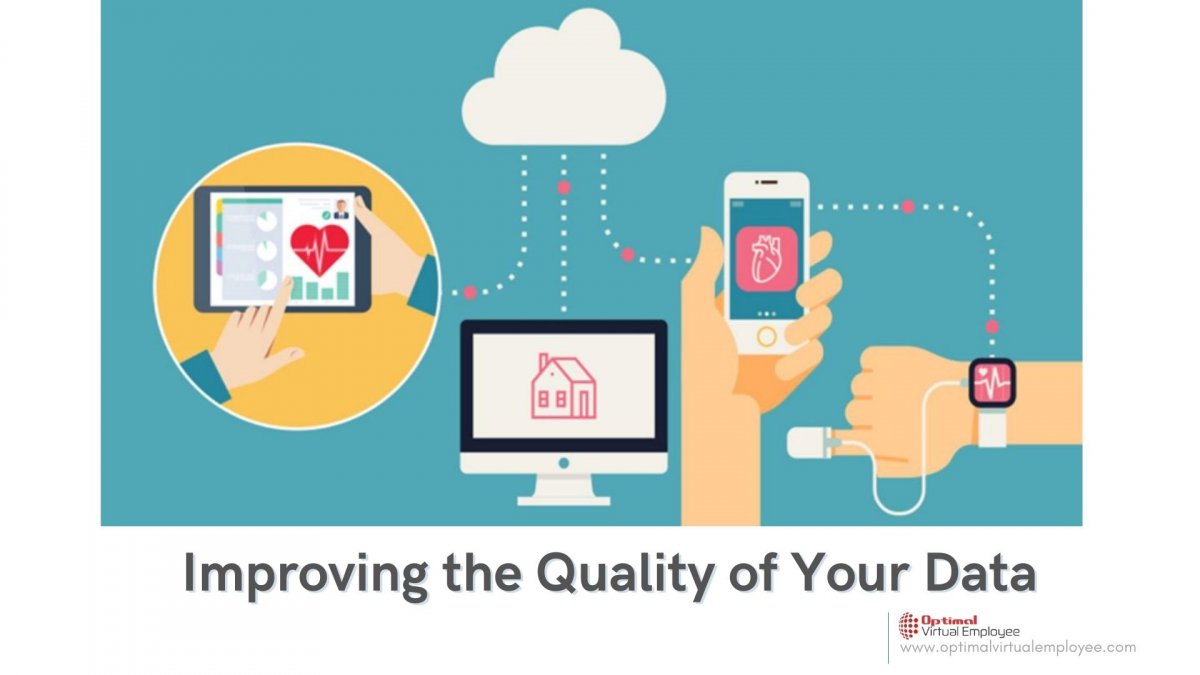Quality of data is what determines the competitive edge for IT businesses. However, what the term ‘quality data’ entails, differs from one business to another. For instance, some businesses need data management to update CRM systems. However, other marketing-focused businesses need to maintain data sets for customer segments to drive advertising campaigns.
The foremost thing to do is evaluate if the data a business owns is befitting for their business purpose. To ascertain this, businesses need to alight their quality check about their purpose and improve data quality. Software developers can develop innovative KPIs that can help with quality assessment, engagement and other metrics of strategic business importance. Data quality assessment also helps you get a fair idea about ROI from improvement efforts.
Here is a concise guide for improving the quality of your data:
Understand your data lifecycle and map data for different stages of the data life cycle to highlight quality issues. Data quality improvement is a long-term procedure. It brings forth better data, decisions, and outcomes. Here are some useful tips for your long-term journey to better data quality.
-
Prioritize Data
All data is not equal. Begin with assessing how you use data to support your business strategy and list down major problems resulting from a shortage of data. It’s important to lay down business goals, KPIs, the kind of user data needed to meet the KPIs, types of processes needed to access the data, how to use the customer data and which systems collect and store the user data.
As you figure out the main touchpoints in the customer journey, you must map teams and processes involved in customer engagement and create a heat map of customer journey data issues. This highlights data problems that various departments face and can improve overall business performance.
-
Centralized Ownership
After you are clear about the KPIs for your data quality, you must expedite data management efforts like centralizing the ownership of all data-centric activities. The organization must appoint a CDO or a DBA who can maintain the data under his custody. Singular centralized ownership gives transparency when it comes to data-related assets and activities.
Centralized ownership of data can optimize data-centric business processes and to ROIs. A team of data professionals can further work towards preserving data quality through strategizing data processing.
-
Avoiding Record Duplication
Data duplication is one of the biggest deterrents to data quality. Duplicate data makes it difficult to configure the right record, creates confusion, and in the end, costs businesses in terms of time wasted in finding the right kind of data. Identify any duplicate records on your system with software developers’ help and the plethora of tools they use.
Professional software developers ensure automated processes to check new data at entry points, publish notifications when other systems insert duplicate data, merge old and new features, and run reports to identify the duplicate records.
-
Omit Free Form Text
Web apps and systems often allow users to input data on web forms and thick-client apps using various input commands. To enhance your data quality, software developers must reduce the number of fields that allow entering free-form text. Even seasoned internet users are prone to making mistakes when entering data.
Skilled software developers leverage coded fields like drop-down lists, radio buttons, checkboxes, list controls etc. to force a visitor to pick an option instead. When you hire software developers to omit free form text, it creates a data quality standard at the point of data entry. It also simplifies the process of data querying and reporting. There is consistency in the data repository, which enhances its overall quality.
-
Curate Quality Data Sources
IT departments find it difficult to integrate data from different systems and are often required to be vigilant. There may be different identifiers that may vary between systems; for example, there may be data types that may not be supported.
Hire software developers who can carefully ingest data from other systems. It may be time-consuming to map System A to System B correctly. It professionals must focus that the data is converted correctly, expectations are identified and logged etc.
In the End
Data-driven decisions are an incessant reality and not a passing trend. Inaccurate data can put the outcomes of strategic business decisions at risk. Data quality is imperative to most business processes. Besides technology and analytics, data quality also makes your business stand ahead of others in their field.
Here are some brilliant yet simple ways to improve the quality of your data. It’s time you focus on these data quality improvement methods with a robust action plan as listed in this step by step guide. Data management best practices need a business perspective as they need technical focus. Data quality technology solutions can help businesses facilitate overall efforts put in place for quality improvement.









